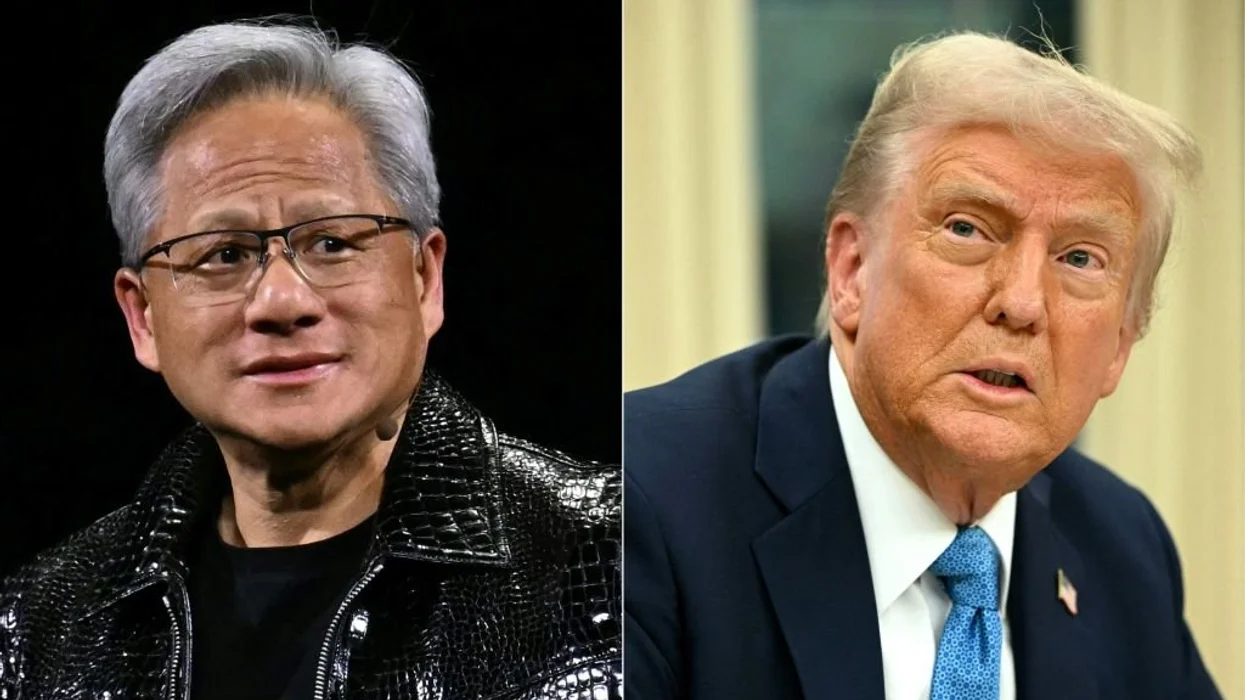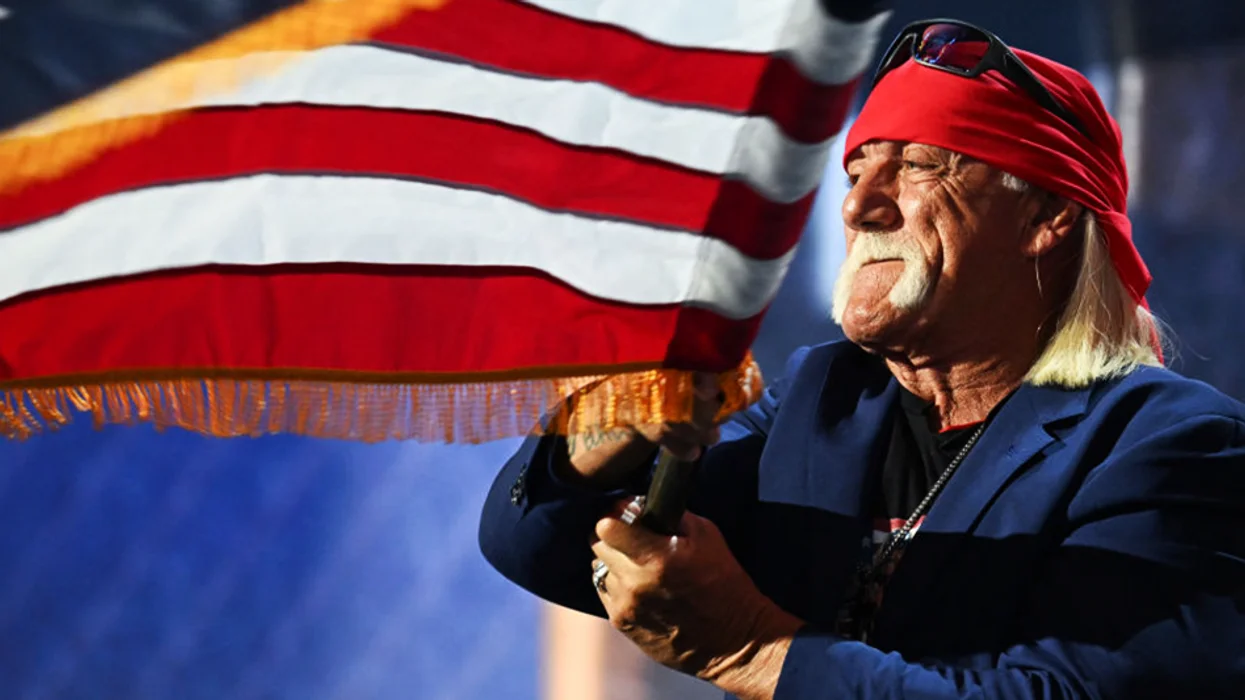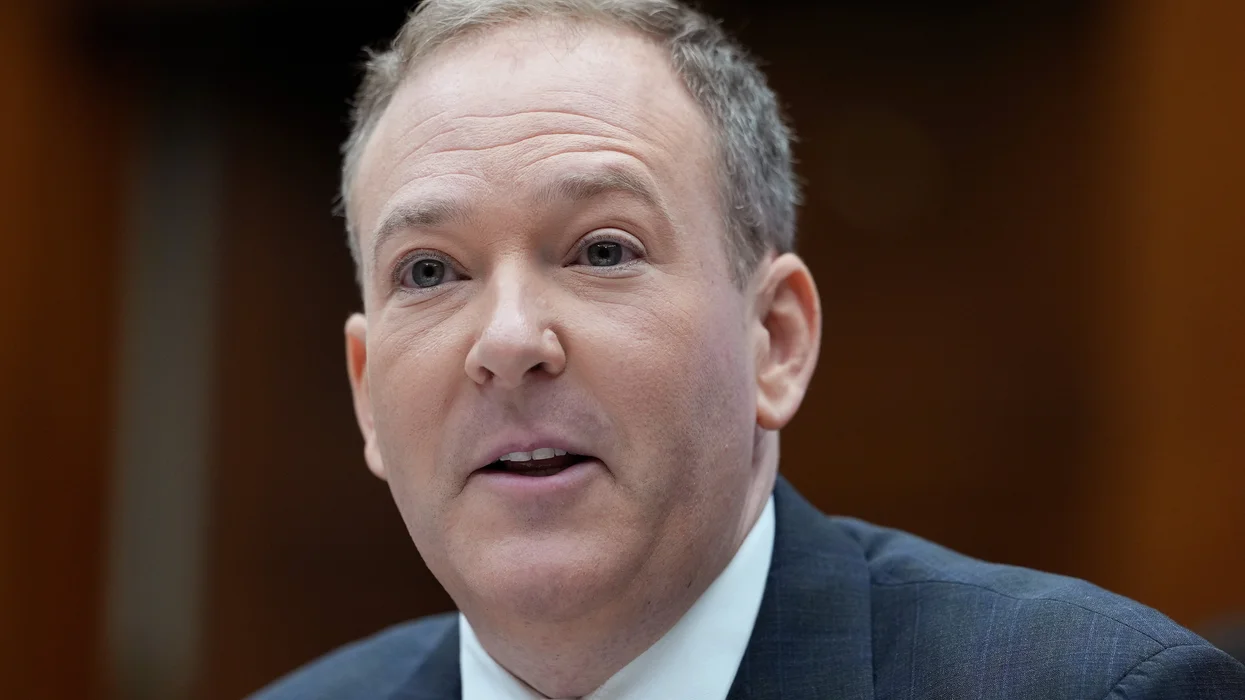
© 2025 Blaze Media LLC. All rights reserved.
Native Americans March in Protest of Alleged KKK Surgical Scars Made on Blind Elder
May 22, 2012
“I am scarred for life, but I seek justice."

RAPID CITY, S.D. (The Blaze/AP) — Hundreds of people marched Monday in support of a man who says the letters KKK were carved into his stomach by a surgeon at a South Dakota hospital.
A YouTube video featuring 69-year-old Vern Traversie, a Lakota man who lives on the Cheyenne River Reservation, has gone viral in Native American communities. In it, Traversie shows a photo of his abdomen. Though he himself is blind, Traversie says he was told by others that the scars left after his heart surgery make out the hateful letters, and he is outraged.
Watch Traversie talk about his situation in this April 24 video -- one of many that have been posted on YouTube since the incident -- with more than 44,000 hits:
The problem is, not everyone sees it. Like those spotting the Madonna in a water stain, Traversie's advocates are staunch believers. Those who aren't include police who investigated his allegations and hospital officials.

See more photos of Traversie's surgical scars here.
Rapid City police say they conducted an investigation but found no evidence of a crime. Craig Saunders, a cardiologist at Barnabas Hospital in Newark, N.J., said incision marks can take many different shapes, depending on where the doctor needs to get into the body. Saunders, who did not operate on Traversie, said surgical tape also can leave scarring and lesions depend on the make-up of the person's body.
Watch this KSFY news report (via the Incredibly Racist YouTube channel):
The lack of clear letters hasn't deterred Traversie, his supporters or those who see the scars as just more evidence of continued mistreatment of Native American people.
"Rapid City ... we understand you have been carving up our people. This is going to end today," American Indian Movement founder Dennis Banks said to a roaring crowd before leading the supporters on a more than two-mile long march from a Rapid City plaza to the hospital where the surgery happened .

According to the Rapid City Journal, the surgery where the alleged racist carving took place occurred in August 2011. Although Traversie didn't attend the march, he said to the Journal that he is still looking for justice:
“I am scarred for life, but I seek justice. I don’t want any other Native American to be treated like I was by the medical professionals who I trusted to take care of me when I was vulnerable,” said Traversie, in the written statement. “I am thankful that so many Native Americans and other people from all over the world have reached out to me to say that they support me. I am humbled by their compassion.”
While Traversie's story spurred the protest, many in attendance referred to broken treaties, unsolved murders and incarceration rates among Native Americans as their reasons for showing up.
"We're classified as second class citizens," said Hap Marshall, 69, a resident of the Cheyenne River reservation. "But when they want our votes, we're their brother."
The protest was relatively peaceful. Officers from the Rapid City Police Department blocked off traffic as the supporters, many dressed in red shirts and waving American Indian Movement flags, marched to the beat of a drummer riding in a truck leading the way. Passing cars occasionally honked.

A group of about 15 people — including Banks and Oglala Sioux Vice President Tom Poor Bear — met with officials at the hospital, while police prevented other supporters from entering the building.
The march was largely organized by Cody Hall, who lives on the Cheyenne River Reservation, and Chase Iron Eyes, who lives on the Standing Rock Indian Reservation that straddles the North Dakota-South Dakota border, in an effort to bring attention to what they say is continued mistreatment of Native American people.
The Rapid City Journal reports Hall saying even after meeting with hospital officials, he felt their answers were "scripted" and said the group is going to continue moving forward with seeking justice. A Facebook page has been established for those interested in seeking "Justice for Vern."
Many in the Native American community believe there are different standards of justice for them and for other races, said Stew Magnuson, who writes a column for a Native American newspaper and wrote a book about issues on South Dakota's Pine Ridge Reservation.
Prior to the 1970s and the American Indian Movement, Native Americans felt powerless without representation on juries. AIM changed that by marching into towns and demanding justice, which no one had ever seen before, Magnuson said, adding: "So, I think some of these feelings live on, rightly or wrongly."
As long as the marches and rallies remain peaceful, Magnuson said he believes the demonstrations are an appropriate way for Native Americans to get their voice heard. On the other hand, he said, people can't let rumor and speculation be the narrative of the story.
Some Pine Ridge reservation residents — Native American and non-Native — mentioned a March protest as an example of an instance when demonstrators didn't check their facts beforehand.
In that incident, a group of residents began protesting what they said was a truck carrying materials for TransCanada's Keystone XL project. The Oglala Sioux and Rosebud Sioux tribes have been vocal in their disapproval of the proposed pipeline that would bring oil from Canada's tar sands region in Alberta to refineries along the Texas Gulf Coast.
But the trucks they were attempting to block were not a part of the pipeline, which has been stalled by rejection of a federal permit.
Want to leave a tip?
We answer to you. Help keep our content free of advertisers and big tech censorship by leaving a tip today.
Want to join the conversation?
Already a subscriber?
more stories
Sign up for the Blaze newsletter
By signing up, you agree to our Privacy Policy and Terms of Use, and agree to receive content that may sometimes include advertisements. You may opt out at any time.
Related Content
© 2025 Blaze Media LLC. All rights reserved.
Get the stories that matter most delivered directly to your inbox.
By signing up, you agree to our Privacy Policy and Terms of Use, and agree to receive content that may sometimes include advertisements. You may opt out at any time.





